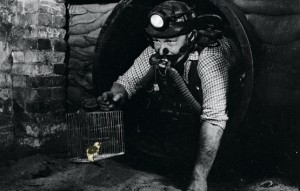Chiropractic care help myofascial pain
This past few weeks I have seen an increase in the number of chronic myofascial pain syndromes. I thought I take a few minutes and describe the conditions and what chiropractic can do the help alleviate the pain.
Chronic myofascial pain is a common pain condition, and its more and more people are developing the symptoms. In middle-aged people, this condition can affect about half of the population. It is more twice as common in women than men. In Medicare aged people the prevalence is about 85% for the both male and females. Because the the baby-boomer group is moving into the Medicare system, all doctors can expect to see more chronic myofascial as the years progress. In fact, some studies suggest that the number of cases can double by the year 2040. Right now, researchers estimate that between 8 and 10 million women suffer from chronic myofascial pain. If that number is expected to double, we could be looking at significant concern for the health care industry in the future.
As a chiropractor, I have used spinal manipulations or adjustments to help control spinal pain and manage musculoskeletal injuries. I also use therapies like ultrasound, electrical muscle stimulation, and traction. I am frequently asked how those treatments work to control pain.
In order to help patients understand how chiropractic manipulation helps with pain, one must understand that the nervous system is two-way communication. The brain is always monitoring the internal environment of the body, and making decisions and actions based on that neurophysiological input. As an example, look at someones posture when lift something heavy. They tend to lean away from the object in order to balance their body. Watch a mother when she holds a baby on her hip. She will lean away from the baby in order to maintain balance.
There are nerve endings in all the joints, tendons, and muscles of the body. These nerve fibers are monitoring the environment of the tissue. They monitor pressure, load, balance, stretch, as well as chemical composition. Think of the canary in the coal-mine.

Nerve endings work like this canary in a coal mine. Nerves alert the brain when the environment becomes toxic.
When the canary died, the alarms sounded to warn the miners. There are nerve endings which alert the body to unhealthy chemical imbalances in the muscles.
Many researchers believe that chronic myofascial pain is related to histochemical changes in the muscle tissue and fibers surrounding the muscles. Focal regions of chemical irritation in the muscles are called myofascial trigger points.
For a new study, researchers investigated if spinal adjustments, like those delivered by a chiropractor, could produce immediate pain relief in the trigger points. The researchers discovered that chiropractic adjustments created an immediate decreased pain sensitivity. The results were pretty clear, chiropractic spinal adjustments can reduce myofascial pain when applied correctly.
The theory behind the mechanism of action is difficult to describe to the layman, but it involves a sympathetic reflex in the spinal cord (substantia gelatinosa area) causing hyperdilation of the vascular tissue in the muscles. This lead to a normalizing of the chemistry.
In terms of the canary, getting chiropractic adjustments is like getting an infusion of fresh air in the depths of the coal mine. Stop by the Innova Pain Clinic in St George to have your healthy infusion.
Featured image courtesy of FreeDigitalPhotos.net and Gualberto107
Reference
Srbely J, Vernon H, Lee D, Polgar M. Immediate effects of spinal manipulative therapy on regional antinociceptive effects in myofascial tissues in healthy young adults. Journal of Manipulative and Physiological Therapeutics 2013 [Epub before print; currently in press.] Accessed at http://download.journals.elsevierhealth.com/pdfs/journals/0161-4754/PIIS0161475413001073.pdf.



